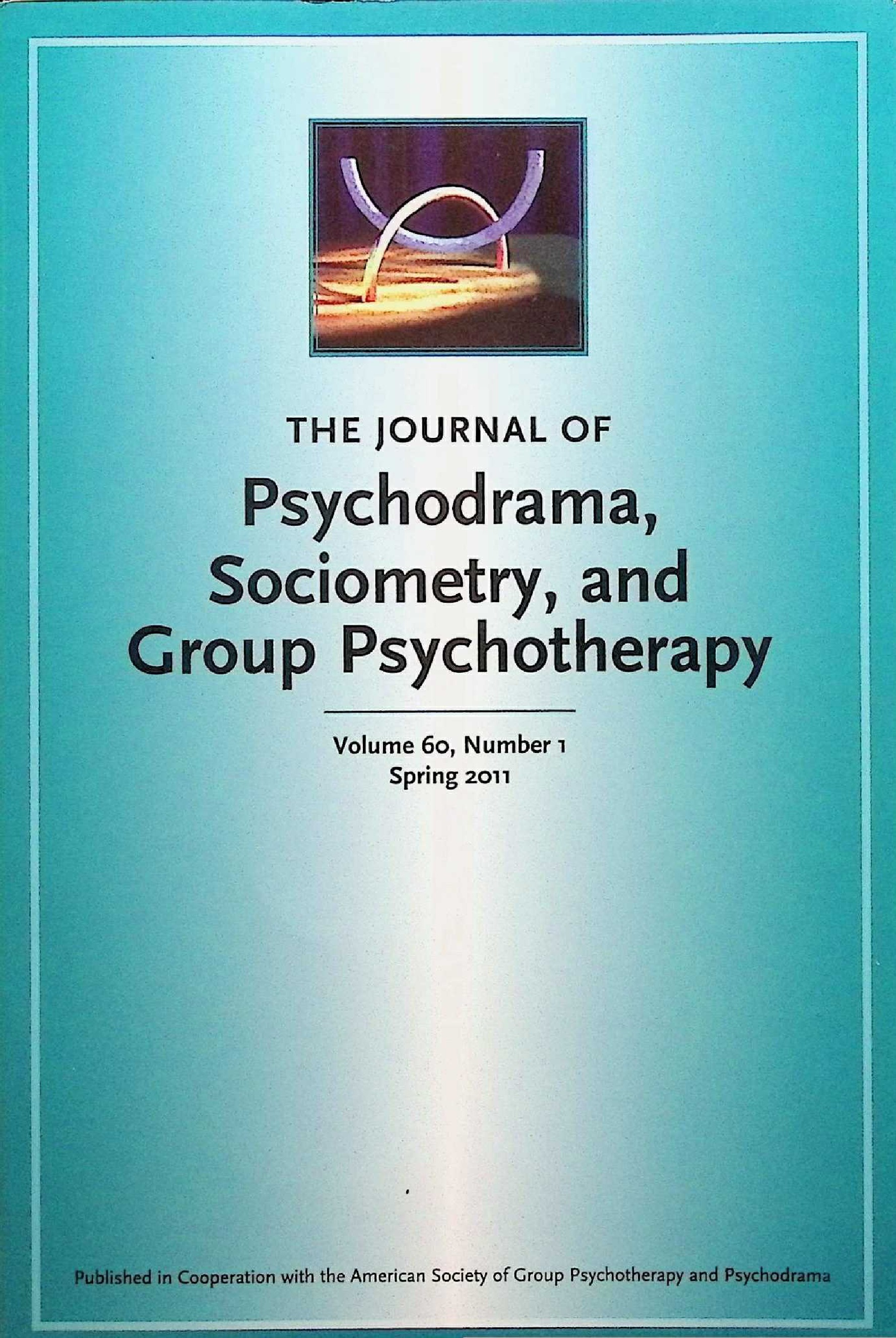The Early Influence of Moreno and Psychodrama on Theodore Sarbin and Role Theory
Keywords:
History of psychology, psychodrama, role theory, Sarbin, MorenoAbstract
Theodore Sarbin (1911-2005) was a significant figure in the field of role theory, social psychology, narrative psychology, and constructivism. Because constructivism has become a more prominent trend in psychology and psychotherapy, it is of historical interest to note how Sarbin's work was influenced by Moreno and, in turn, to recognize Sarbin's relevant to the advance of Moreno's contributions today.
References
Blatner, A. (2000). Foundations of psychodrama: History, theory & practice (Rev. 4th
ed.). New York: Springer.
Brissett, D., & Edgley, C. (Eds.). (2006). Life as theater: A dramaturgical sourcebook (2nd ed.). New Brunswick, NJ: Aldine Transaction. (Original work published 1990) Bruner, J. S. (1986). Two modes of thought: Actual minds, possible worlds. Cambridge, MA:
Harvard University Press. Cameron, N. (1943)* The paranoid pseudo*community. American Journal of Sociology, 49(f), 32-38.
Cameron, N. (1950). Role concepts in behavior pathology. AmericanJournal of Sociology,
5X5). 464-467-
Crossley, M. L. (2000). Introducing narrative psychology: Self, trauma, and the construction
of meaning. Philadelphia: Open University Press.
De Rivera, J., & Sarbin, T. R. (Eds.). (1998). Believed-in imaginings: The narrative construction
of reality. Washington, DC: American Psychological Association.
Friedlander, J. W, & Sarbin, T. R. (1938). The depth of hypnosis.Journal of Abnormal and
Social Psychology, 33, 453-475.
Goffrnan, E. (1959). The presentation of self in everyday life. New York: Doubleday.
Hare, A. P., & Hare, J. R. (1996)./ L. Moreno. London: Sage.
Hevern, V. W. (2004a, March). Introduction and general overview. Narrative psychology:
Internet and resource guide. Retrieved August 22, 2007, from http://web.lemoyne. edu / — hevern/ narpsych.html
Hevern, V. W. (2004b, April). Theorists and key figures: M-N-O. Narrative psychology: In ternet and resource guide. Retrieved October 28, 2010, from http://web.lemoyne. edu / —hevern / na r psych / nr-theorists-mno.html#moreno
Lewis, J. H., & Sarbin, T. R. (1943). Studies in psychosomatics. I. The influence of
hypnotic stimulation on gastric hunger contractions. Psychosomatic Medicine, < 125-131.
Lieblich, A., Tuval-Mashiach, R., & Zilber, T. (1998). Narrative research: Reading, analys.
and interpretation. Thousand Oaks, CA: Sage.
Marineau, R. E. (1989). Jacob Levy Moreno: 1889-1974. London: Tavistock/Routledge.
Mountjoy, P. T, & Hansor, J. D. (1989). Jacob Robert Kantor (1888-1984)* The Interbe haviorist, 17(2), 18-20. Retrieved May 2,2006, from http:/ /web.utk.edu/ —wverplan/ kantor/jrkbio.html
Sarbin, T. R. (1943). The concept of role-taking. Sociometry, 6(3), 273-285.
Sarbin, T. R. (1945). Spontaneity training of the feeble-minded. Sociometry, 8(3/4), 151-155. Sarbin, T. R. (1954). Role theory. In G. Lindzey (Ed.), Handbook of social psychology. Vol.
I. Theory and method (pp. 223-258). Cambridge, MA: Addison-Wesley.
Sarbin, T. R. (Ed.). (1986). Narrative psychology: The storied nature of human conduct. New York: Praeger.
Sarbin, T. R. (1994). Steps to the narratory principle: An autobiographical essay. In D. J.
Lee (Ed.), Life and story: Autobiographiesfor a narrative psychology (pp. 7-38). Westport, CT: Praeger.
Sarbin, T. R. (2003). The dramaturgical approach to social psychology: The influence of Erving Gofiman. In R. J. Sternberg (Ed.), The anatomy of impact: What makes the great works of psychology great (pp. 125-136). Washington, DC: American Psychologi cal Association.
Sarbin, T. R. (2005). The poetics of my identities. In G. Yancy Be S. Hadley (Eds.), Narrative identities: Psychologists engaged in self-construction (pp. 13-35)* Philadelphia: Jessica Kingsley Publishers.
Sarbin, T. R., & Allen, V. L. (1968). Role theory. In G. Lindzey & E. Aronson (Eds.), Handbook of social psychology (2nd ed., Vol. 1, pp. 488-567). Reading, MA: Addison-Wesley.
Thomas, E. J., & Biddle, B. J. (1966). The nature and history of role theory. In B. J. Biddle
& E. J. Thomas (Eds.), Role theory: Concepts and research. New York: Wiley.
Downloads
Published
Issue
Section
License
Copyright (c) 2025 Journal of Psychodrama, Sociometry, and Group Psychotherapy

This work is licensed under a Creative Commons Attribution 4.0 International License.
